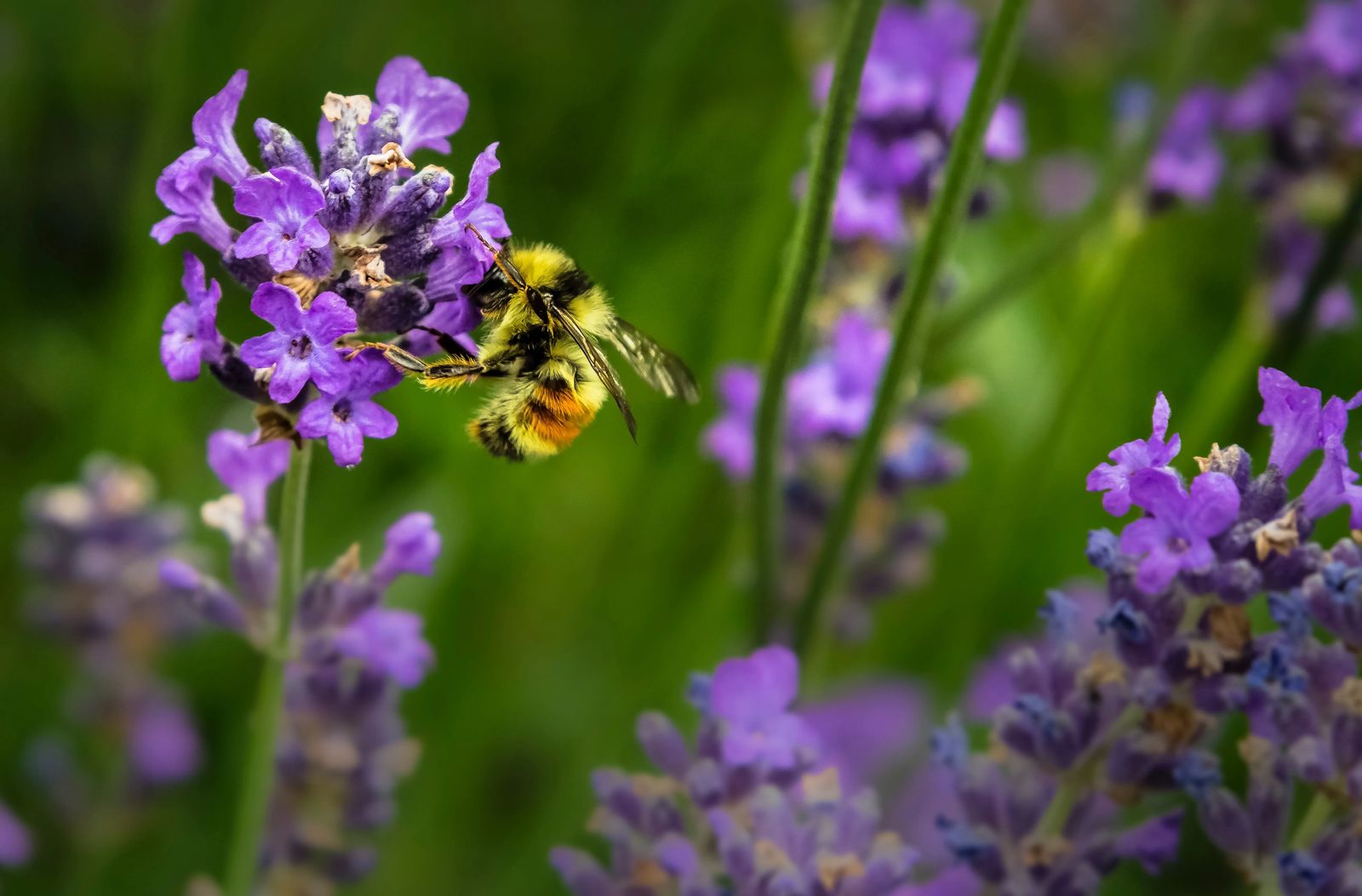
19 Buzzworthy Bee Facts
July 2015
by TJ Wierenga
In the July 2015 issue of Simply Family Magazine the pages were all a-buzz with the honeybee 4-1-1. From beekeepers to telling the difference between bees and wasps and providing tips for helping children overcome their fear of stinging insects, we really got the honey flowing. Now we're back with more buzzworthy bee facts and as an added bonus, we've got an adorable (free) bee coloring page printable - just for you!
{Printable Bee Happy Coloring Page}
'Bee' For Real...Did you know?
- Part of a beekeeper’s job is actually feeding the bees! During the months in a Montana winter when there are no pollinating flowers within the 3-mile radius a typical honeybee flies, bees must be fed, typically with sugar water.
- The interior of a bee hive is kept at 95 degrees by the bees, any season of the year, so that their young will survive. They need a great many calories in the winter, as they huddle together and vibrate their wing muscles to generate heat. A hive will eat up to 100# of honey in a cold Montana winter, so when beekeepers rob the hive in the Fall, they are sure to leave plenty of food to maintain the bees over winter.
- Bees typically do not fly in temperatures under 50 degrees. They are diurnal (awake during the day) and on warm days will work sunup to sundown.
- Bees typically do not fly in temperatures under 50 degrees. They are diurnal (awake during the day) and on warm days will work sunup to sundown.
- Each hive has only one queen bee – and she can lay up to 2,500 eggs per day! She may live 3 to 5 years. As the population in a hive grows, she lays special eggs that will hatch into new queen bees. After laying the eggs, the queen sends out worker bees to find a new home and the majority of the bee family “swarms” to the new place. After the baby queen bees are born in the old hive, the strongest young queen takes over. Sometimes a hive will kick an older queen out who is no longer able to perform adequately to maintain the needed egg laying.
- Drones are male bees, and they do not have stingers. They do not work and only rarely leave the nest.
- Worker bees (nearly 9 out of 10 honeybees) are all female. They gather pollen and nectar, feed and raise the young bees, keep the hive clean and cool, and defend the colony. They usually live only about 6 weeks, especially in the summertime, when they literally work themselves to death.
- Each hive has only one queen bee – and she can lay up to 2,500 eggs per day! She may live 3 to 5 years. As the population in a hive grows, she lays special eggs that will hatch into new queen bees. After laying the eggs, the queen sends out worker bees to find a new home and the majority of the bee family “swarms” to the new place. After the baby queen bees are born in the old hive, the strongest young queen takes over. Sometimes a hive will kick an older queen out who is no longer able to perform adequately to maintain the needed egg laying.
- Drones are male bees, and they do not have stingers. They do not work and only rarely leave the nest.
- Worker bees (nearly 9 out of 10 honeybees) are all female. They gather pollen and nectar, feed and raise the young bees, keep the hive clean and cool, and defend the colony. They usually live only about 6 weeks, especially in the summertime, when they literally work themselves to death.
- Some worker bees are assigned as “Hive Guards”, and will inspect incoming bees by sight and scent before allowing entrance. Robber bees will sometimes try to gain entry and steal honey.
- Honeybee colonies can often have 50,000 or more worker bees.
- Honeybees have 6 legs, 2 compound eyes made up of thousands of tiny lenses (one on each side of the head), 3 simple eyes on the top of their head, and 2 pairs of wings.
- They also have 170 odorant receptors, compared with only 62 in fruit flies and 79 in mosquitoes.
- Honeybees have hair on their eyeballs to keep them clean from dust and pollen.
- They have a long proboscis that they use like a straw to draw nectar up out of flowers and in to one of two stomachs: the main stomach is used to process nectar as food, and the nectar pouch saves it until their return to the hive.
- Honey differs in color and taste depending on the flower blossoms visited by the bees. Typically the lighter-colored honey is milder than the bolder, darker-colored varieties.
- Honey contains a wide array of vitamins, minerals, enzymes and amino acids, as well as antioxidants.
- Bees prefer blue or yellow flowers, and flowers that smell sweet.
- They visit about 2,000,000 (that’s two million!) flowers just to make one pound of honey. A single worker bee will make only 1/12th of a teaspoon of honey in her lifetime.
- Honeybees are the only insects that produce food and medicine for humans.
- Bees fly an average of 13-15 mph, their wings beating up to 200 times per SECOND... much faster than hummingbird wings which beat “only” 80 times per second!
- Bees communicate with each other by smell - releasing chemicals called pheromones to indicate fear or danger, and also by complex dance moves to tell other bees where nectar and pollen can be found. Disco balls are optional.
Never miss an issue, check out SLM's digital editions here!




